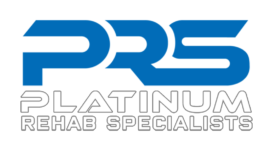How to Manage Your Strained Hamstring
How to Manage Your Strained Hamstring
Hamstring strains are prevalent in the sports world especially in male professional soccer players. To give better perspective, the professional soccer team that rosters 25 players can expect to have 7 players experience a hamstring injury in season.
From an anatomical perspective, there are just some things we are born with that leave us open to injuring a hamstring muscle. These are things we cannot change. Just like we are unable to change the fact we have already been through at least 1 injury which as stated before gives us a higher likelihood to reinjure compared to our uninjured counterparts. The good part is that we can lessen the risk of reinjury as long as the injured person can complete a thorough rehabilitation program. This means not only just eliminating pain but also improving the strength and elasticity of the muscle.
Signs/Symptoms:
A sharp or sudden pain in the back of the thigh will usually be the first sign of a hamstring strain or tear. This could be followed by visual bruising, limited walking, unable to run, and loss of strength in the hamstring group (knee flexion).
Management of condition:
Usually a healthcare professional trained in orthopedics (PT, MD, DO) will be able to run through the appropriate tests and measures to confirm the hamstring strain or tear. Imaging is usually not necessary due to the fact that a good physical examination assesses mobility, strength, and ability to perform your sport.
In more severe cases an image is necessary when there is a suspected avulsion fracture where the tendon pulls away from the bone and a bone fragment comes with the tendon. The abnormalities in muscle appearance and pain levels usually make getting an image apparent within the examination.
On average you can expect to be out of the game from anywhere between 1-4 weeks. This time frame can be longer if there is an avulsion fracture present as referenced above.
Do I need rehab?
Yes! You will need to see a specialist for rehab even for the slightest of strains because of the injury predisposing you to have another injury later on. Statistically an injured player is 3.6x more likely to get reinjured. This is why you need to get through a proper rehab program. The stronger and more resilient you make the hamstring regardless of pain levels, the better chance you have of staying injury and pain free!
What is the PRS process of evaluating a hamstring strain?
At PRS, we pride ourselves on being specialists in our own scope of practice. When it comes to hamstring strains, that falls beautifully into our wheelhouse! You should expect a thorough examination and treatment by our specialist that addresses the pain, improves mobility and strength, and allows the body to heal in an active way. Being told to “rest” without real guidelines is a disservice to the patient by the medical community. Active rest is a term we like where there are specific goals we are wanting to achieve regarding pain and range of motion within the first few weeks after injury. After pain levels and range of motion have improved, then you will be progressing on a strength and mobility program until sport specific movements can be performed with minimal pain. Once sport specific training is in high gear, then you will be seeing your way back on the field, pitch, court, gym, or wherever you enjoy getting your fitness done.
If you are looking for a no BS approach to getting back to your sport as quickly as possible, then reach out to PRS today. Take back control of your healthcare!
Check out my YouTube channel to find a progression of hamstring focused activities to help your tweaked/tight/or torn hamstring get back to normal functioning.
